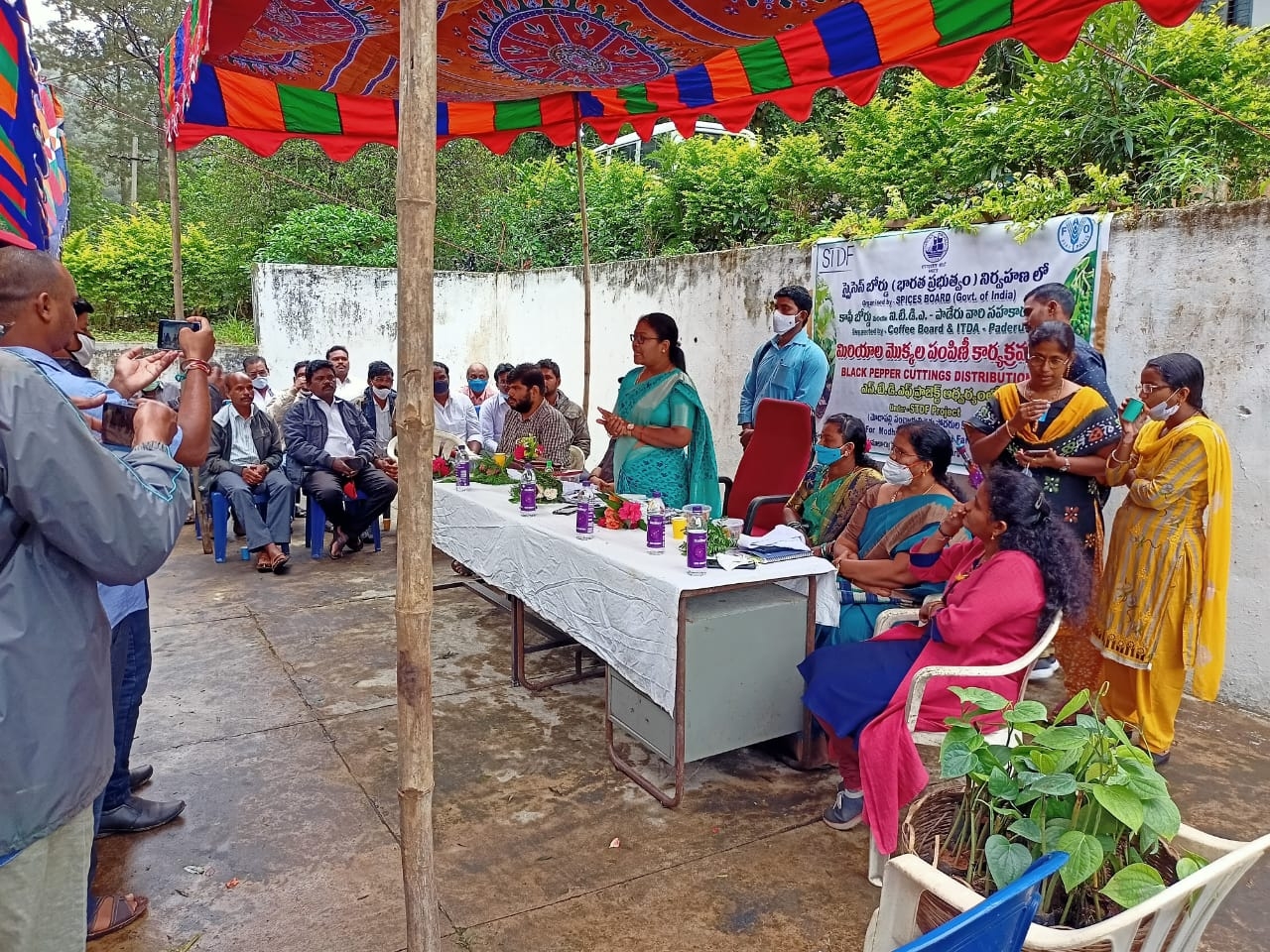
STDF supported this project to increase India's export competitiveness by improving food safety and quality in key spices such as cumin, fennel, coriander and black pepper. With a focus on supporting poor producers, particularly those from marginalized communities excluded from the formal value chain, the project helped approximately 1,200 farmers and 40 other actors across the value chain to produce safe spices.
At the same time, the project promoted the equal participation of women, including women harvesters, by improving food safety practices through training on good agricultural and hygiene practices.
This project results from an STDF Project Preparation Grant (STDF/PPG/517).
At the time of the project’s design and implementation, poverty remained a major challenge in India, a fast-growing economy where much of the rural population relied on agriculture for a living. More than 60% of the Indian population was directly or indirectly involved in farming. Given India's diverse agro-climatic zones, agriculture held strong potential to boost rural development, expand exports and reduce poverty.
India produced more than 3 million metric tonnes of spices annually. While there was opportunity to further expand exports, border authorities in importing countries such as Australia, Japan, the United States and the European Union had rejected shipments on food safety grounds. Many exporters were unable to meet food safety and hygiene requirements in destination markets, particularly concerning aflatoxin and pesticide residues. As a result, exports were largely oriented towards the Middle East, where lower prices limited potential revenue.
Against this backdrop, the STDF project played a crucial role in strengthening food safety in India’s spice value chain to boost market access and support small-scale producers.
1. Capacity building for sustainable practices
The project strengthened the capacity of public, private and academic institutions to deliver training on food safety. Over 150 trainers and 1,700 farmers (including 535 women) were trained in Good Agricultural and Hygiene Practices (GAP/GHP). Standardized training materials, multilingual videos, and innovative tools like street plays boosted awareness and adoption, especially among marginalized communities.
2. Farmer empowerment and improved production
The project helped over 1,200 farmers across four states adopt safer, more sustainable practices in spice production. These included improved irrigation, pest management, post-harvest handling and storage. Six Farmer Producer Organizations (FPOs) were equipped with quality management systems, enhancing their ability to meet international certification standards like IndGAP, reducing compliance risks and strengthening market positioning.
3. Strengthened market linkages
The project strengthened farmer-buyer linkages through FPO services, improving farmers' production practices, market readiness and product quality. The number of farmers associated with FPOs more than doubled, from 120 to 284, helping producers access larger markets with greater stability. Eight buyer-seller meetings and four buy-back workshops resulted in 25 formal agreements between FPOs and exporters, including Indian conglomerate ITC. FPOs were also enlisted on national spice trade portals, further expanding market reach. Overall, the project contributed to a 58% increase in the average annual income of spice farmers in the target regions.
4. Improved food safety and residue control
A National Contaminant and Residue Control Programme (NCRCP) was established and implemented, including lab upgrades and pesticide residue testing. Over 80% of spice samples tested under of spices tested under the NCRCP, met Codex MRLs, significantly improving export potential.
5. Cross-cutting impacts and scale-up
The project catalysed new public–private partnerships, generated spillovers into other crops (such as peanuts), and informed follow-on initiatives by FAO and GIZ to scale interventions to additional spices and commodities. This expansion underscores the project’s broader impact and highlights its value in advancing food safety in India.
1. Develop a cadre of women trainers to lead gender-sensitive programmes
To boost women’s participation in spice farming and capacity-building, the Spices Board and local FPOs should establish a cadre of trained women facilitators. Women trainers can make learning experiences more relatable and inclusive, encouraging broader engagement across farming communities.
2. Improve access to post-harvest tools and infrastructure
Limited access to affordable post-harvest inputs remains a challenge. The Spices Board and government departments should coordinate efforts to ensure farmers can obtain essential equipment such as tarpaulins, drying and processing tools. Improved access can reduce losses, enhance product quality and enhance market value of spices for farmers.
3. Offset income loss during transition to organic farming
Initial yield reductions often discourage farmers from adopting organic practices. To promote the shift, government and donor institutions should consider introducing compensation schemes or premium pricing for farmers in transition. Such measures would reduce risk, incentivize uptake, and support the long-term sustainability of organic spice cultivation.
4. Expand access to bio-inputs, resilient crop varieties and digital advisory services
Climate-smart agriculture is critical for the future of the spice sector. The Spices Board and Krishi Vigyan Kendras (KVKs) could promote bio-inputs and climate-resilient spice varieties, while partners like Digital Green Trust can help scale digital pest management tools via local platforms, such as WhatsApp. These tools can help empower farmers to adopt more sustainable, adaptive practices.
5. Establish advanced testing labs at APMC markets
The availability of local testing infrastructure is essential to ensure compliance with food safety standards. The Spices Board and relevant government departments should prioritize setting up advanced testing laboratories in Agricultural Produce Market Committee (APMC) markets. These labs would allow farmers to conveniently test for pesticide residues and other contaminants, ensuring compliance with domestic and international standards.
6. Extend project duration to strengthen long-term impact
While the project achieved strong results, a longer implementation period would have enhanced sustainability. Extending the project for multiple cropping seasons could support gradual adoption of GAP/GHP, allow better monitoring and refinement, enabling farmers to adapt more effectively.